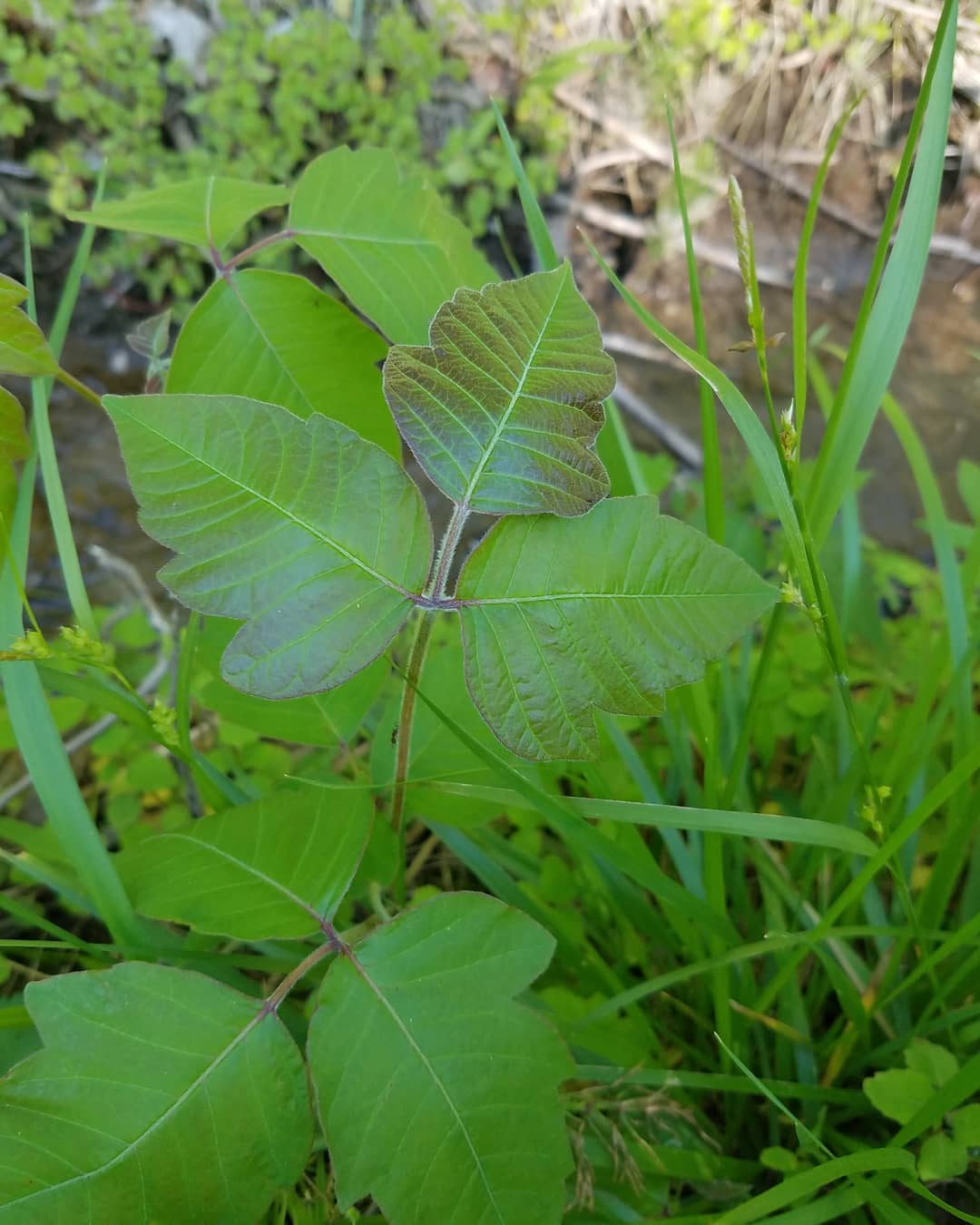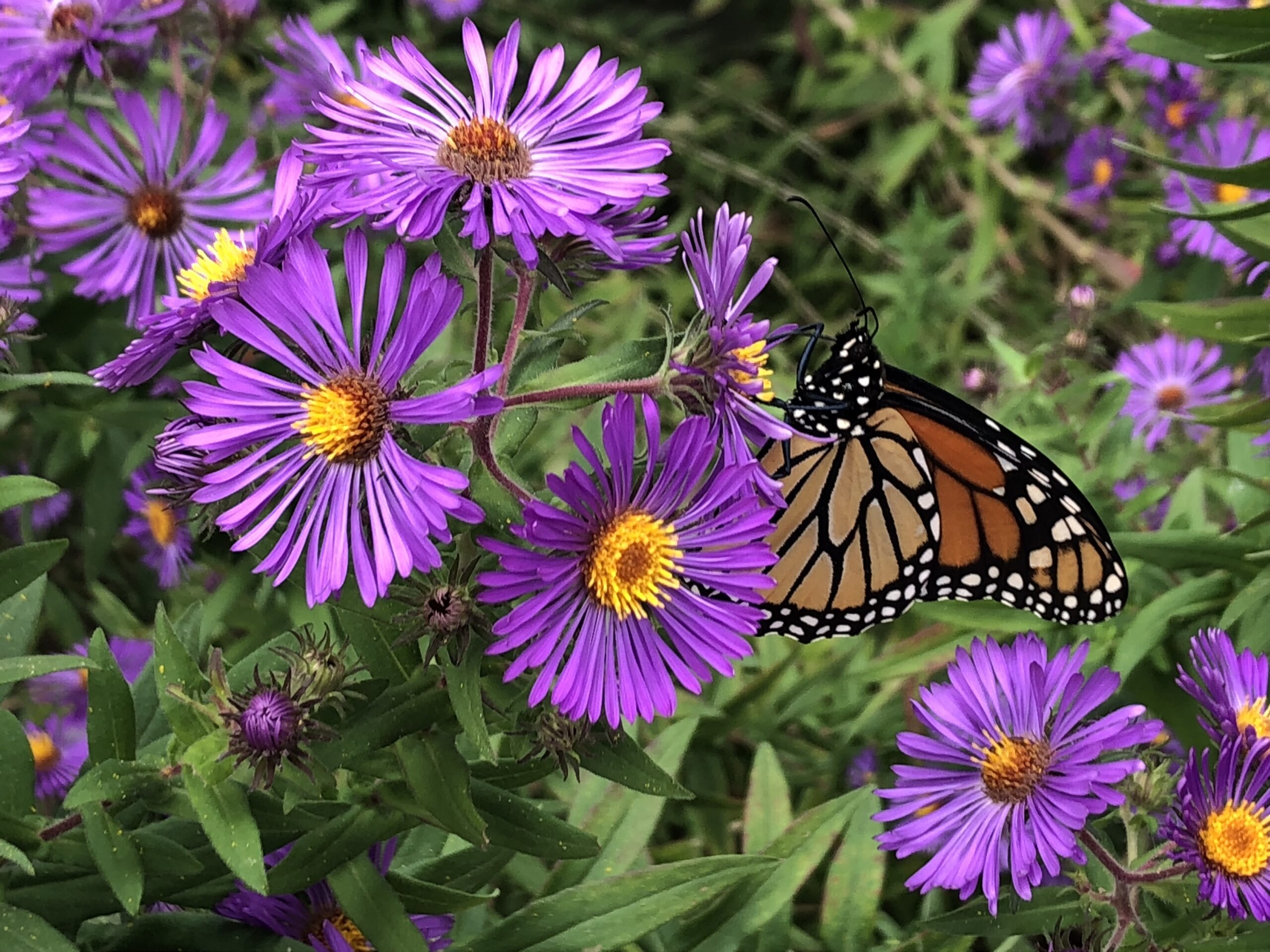Bark to Basics Part III: Identifying Trees at New Salem by Their Bark
Our online tree ID challenge continues as we highlight photos and key features of 5 additional species of native trees you’ll find along the scenic Cardinal Ridge Trail at New Salem. Find ten more species from Week I and Week II.

Tree #11
Sassafras (Sassafras albidum)
Sassafras is a fragrant and distinctive tree commonly found at New Salem. It thrives in clonal thickets, a result of its tendency to sucker and spread, particularly following disturbances. One of its most recognizable features is its unique leaves that occur in three distinct shapes: unlobed (entire), a “mitten” shape with two lobes, and one with three lobes. In early spring, the tree bursts into showy yellow blooms, offering a vibrant display that attracts a variety of early-season pollinators, especially small native bees and flies. Historically, Sassafras roots were used to make tea and root beer, but it’s important to note that there is evidence suggesting the roots may be carcinogenic.
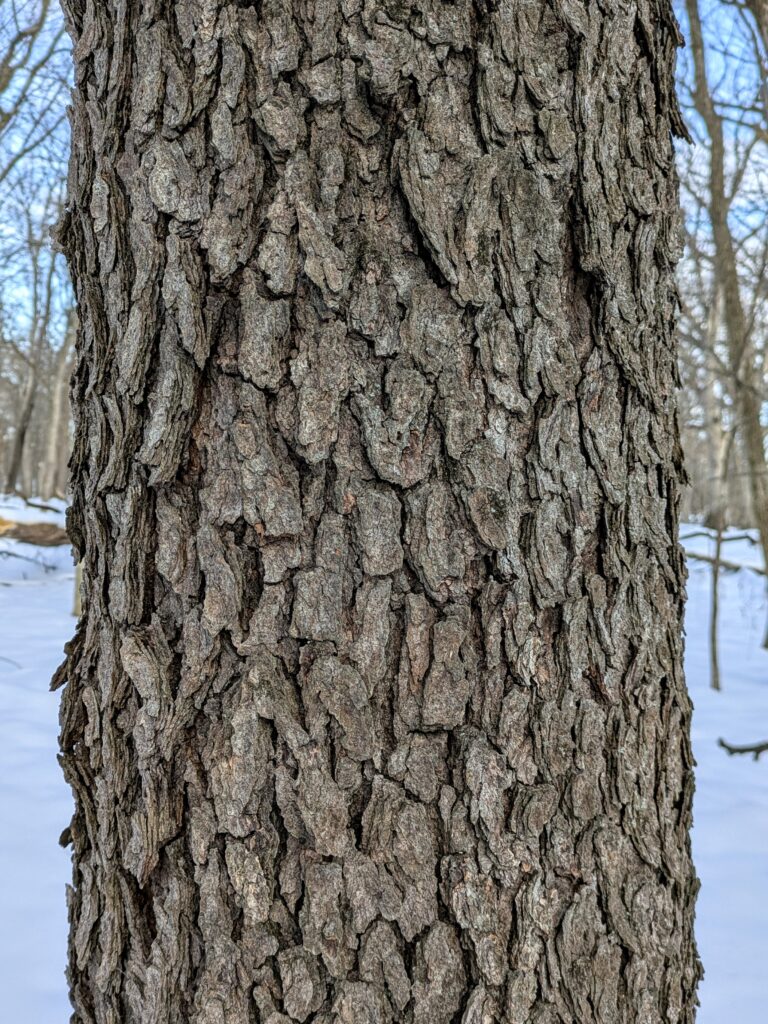
Tree #12
Black Cherry (Prunus serotina)
Black Cherry is a tree that’s easy to recognize, especially by its distinctive bark. When young, the bark is smooth and shiny with horizontal lenticels. As the tree matures, it darkens to a rich gray, breaking into rough plates or flakes. In early summer, the tree produces abundant racemes of small white flowers, which attract a variety of pollinators. These flowers eventually give way to small, black fruits that ripen in late summer. The fruit is a favorite of birds, who help disperse the seeds to sunny spots in the forest where the tree thrives in gaps in the canopy.
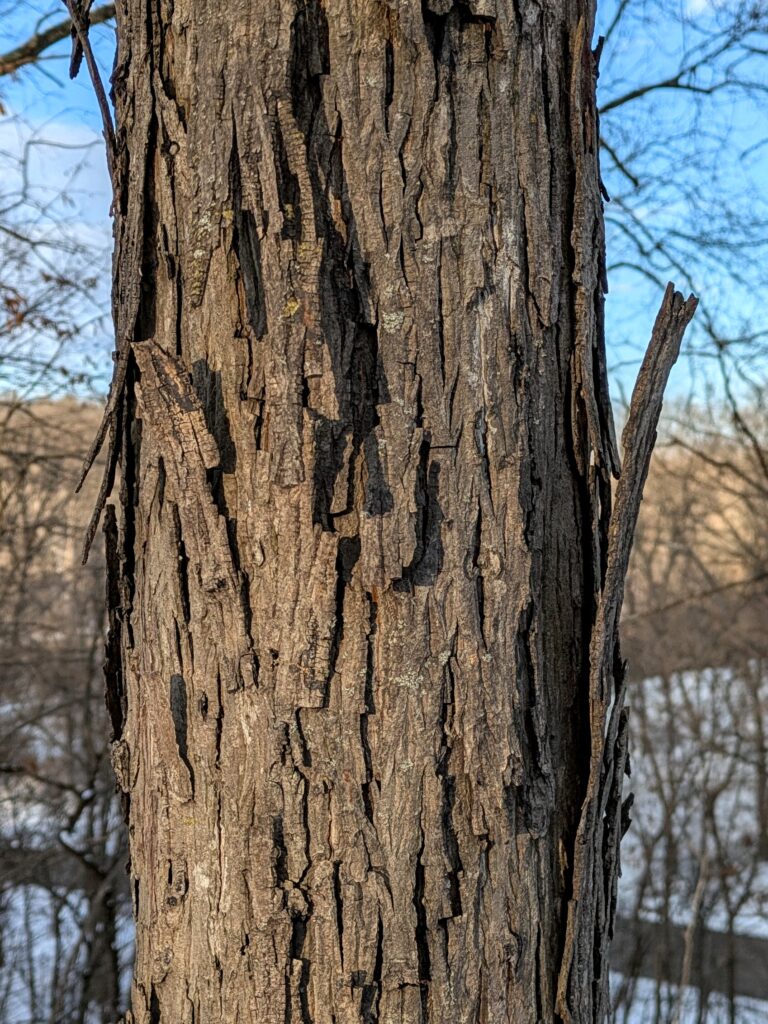
Tree #13
Shagbark Hickory (Carya ovata)
This species is easily recognizable by its unique bark, which peels away from the trunk in long, curling strips, giving the tree its name. Its thick-shelled nuts are a favorite of wildlife, while a variety of native insects feed on different parts of the tree throughout the year. They are edible for humans as well– but you have to beat the squirrels! In the fall, the tree’s compound leaves turn a striking, golden hue, a beautiful sight to behold on a sunny fall day.
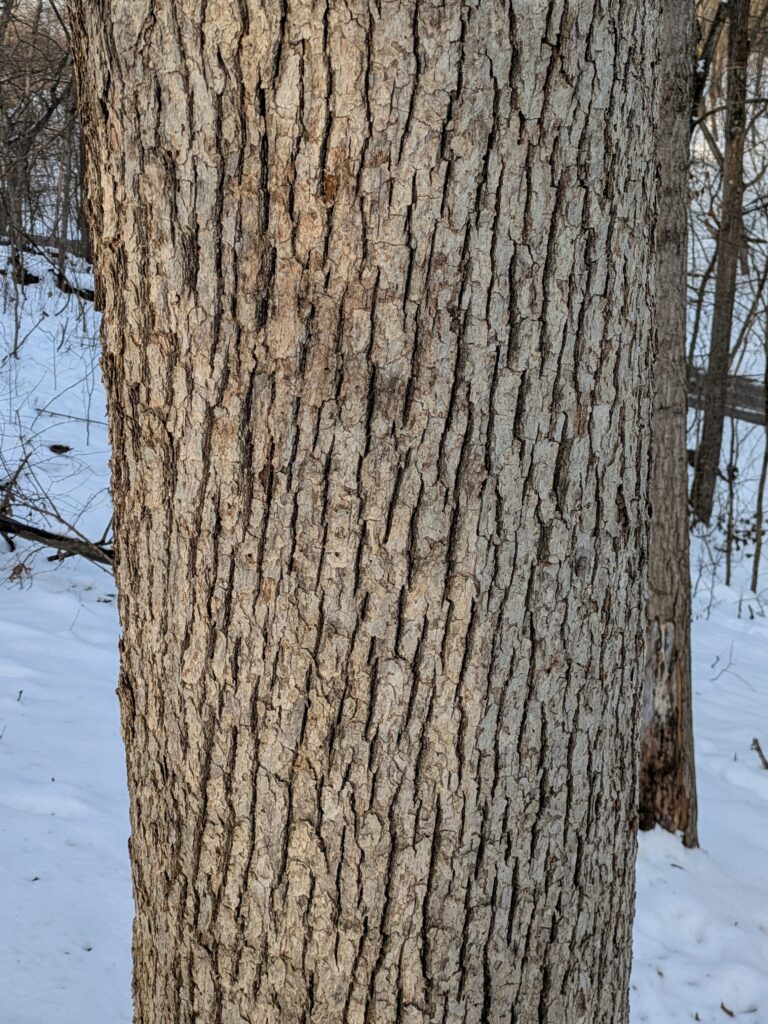
Tree #14
White Oak (Quercus alba)
The White Oak, Illinois’ majestic state tree, is a common sight at New Salem. Along the Cardinal Ridge Trail, you can find several impressive specimens, easily identified by their pale gray, shallowly furrowed bark, which becomes more scaly on the branches of the crown. This versatile tree would have been invaluable to both indigenous peoples and European settlers in New Salem. Its bark was used for medicinal purposes, while its acorns provided plentiful food for wild game. The strong, durable wood was used for everything from building homes and furniture to crafting barrels, tools, boats, and providing fuel.
Like all oaks, however, the White Oak faces significant challenges in regenerating. Despite an abundance of acorns, they often struggle to germinate and establish in the shaded understory. Those that do sprout must contend with the browsing pressure of overabundant white-tailed deer. However, recent management efforts, including prescribed fire, offer hope for boosting the White Oak population and supporting its long-term survival.
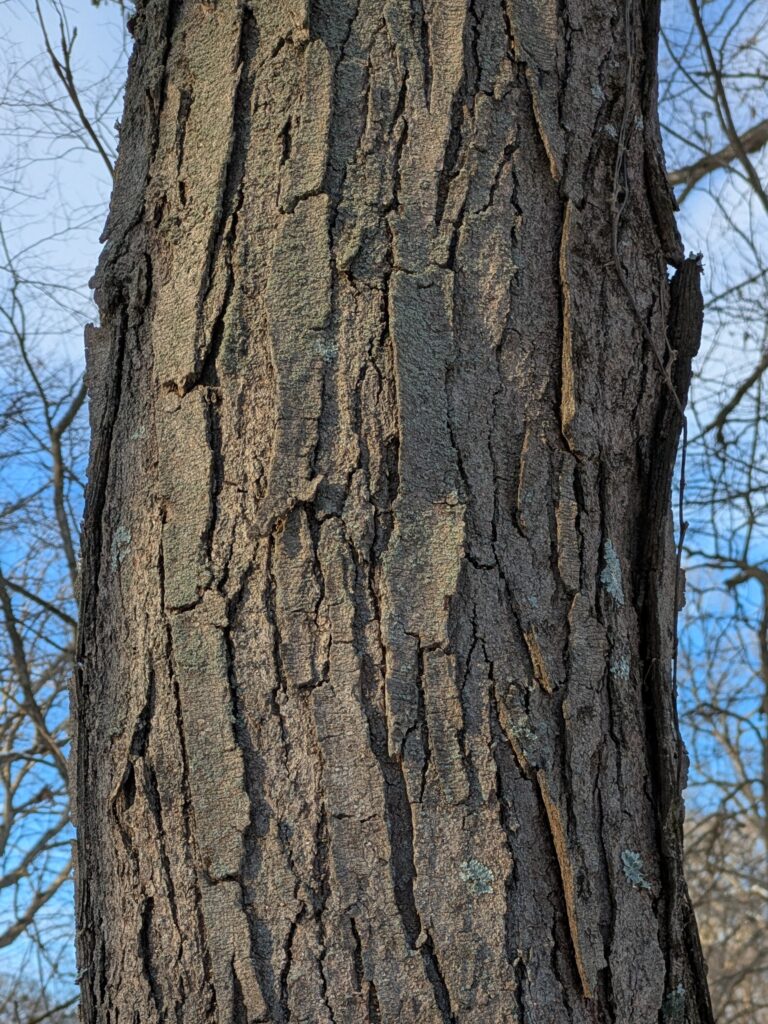
Tree #15
Honey Locust (Gleditsia triacanthos)
Identifying this as Honey Locust would have been easy if we had chosen a trunk with its signature branched spines, but you do come across thornless examples, as seen with this particular tree. It’s believed that the more typical thorny growth evolved as a defense against Ice Age herbivores, such as mastodons and giant sloths! While Honey Locusts don’t make up a large portion of the canopy here, they are scattered throughout the site. The bark of a mature specimen, like the one here, is gray-brown with long, narrow, flat plates. During the growing season, the tree is further identifiable by its fern-like, doubly pinnate leaves and long, flat seed pods. The pods, containing a sweet pulp, are a food source for deer, squirrels, large birds, and even livestock.
Find more information about these and many other Illinois trees and shrubs at Trees, Shrubs, and Woody Vines of Illinois
